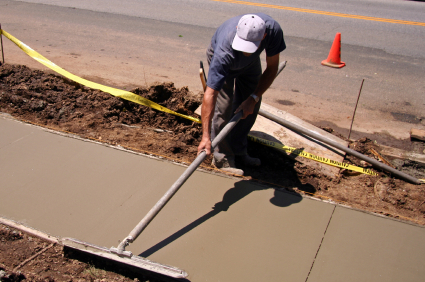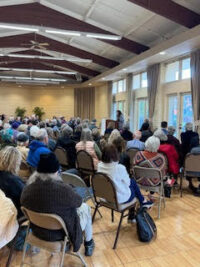Many sidewalks in the City of Sonoma pose dangerous trip and fall hazards to pedestrians. Over time, uplifting due to subsidence, tree roots, and erosion alter the contours of concrete and the city is committed to making sure that its sidewalks are maintained in safe condition.
At its upcoming meeting of October 14, 2024, the City Council will consider recommendations by Michael Berger, Public Works Director on revisions of regulations governing repairs and installation of new sidewalks.
In his upcoming report to the council, Berger notes that the California Streets and Highway Code 5610 et seq. requires that owners of lots, or portions of lots, fronting any portion of a public street shall maintain any sidewalk in such conditions that the sidewalk will not endanger people or property and will not interfere with the public’s use of those areas.
Like many other cities throughout the State, the City of Sonoma has codified this property owner’s responsibility to maintain sidewalks in their frontage in the City’s Municipal Code (Chapter 12.12). To help ensure the City’s sidewalks are open and accessible to all people, the City Council also adopted a Sidewalk Trip Hazard Repair Policy in October 2013. Together, the Municipal Code and Policy provide a framework under which the City and property owners have a shared role in repairing sidewalks.
The City routinely inspects sidewalks to identify defects that could pose a hazard to pedestrians. The most common defect is a vertical deflection between adjacent sidewalk sections which could present a potential trip and fall hazard. For deflections which are less than 1.75 inches high, the City repairs these via a saw cut method to “shave” the vertical deflection to a gradual slope. Over the years, the City has repaired many hundreds of such trip hazards. For larger deflections, the City provides a written notice to the property owner of record. The letter informs the owner of the trip hazard, requirement to repair by replacing the identified sidewalk segment with a new sidewalk, a copy of the repair process and City policy, and includes an offer to share in the repair cost (50% up to a cap of $1,000). The property owner has 30 days to make the repair, after which the owner may submit for the City’s cost share reimbursement. If the owner does not complete the repair, the City makes the repair and then pursues payment via an assessment lien.
The Sidewalk Trip Hazard Repair Policy is available on the City’s website, but property owners are typically surprised when they are notified of a sidewalk defect and their responsibility to repair it as noted above. Another issue concerns tree roots, which are the most common reason that segments of sidewalk become separated to cause a trip hazard. In these situations, the City Arborist must assess the tree to determine if the affected root(s) can be shaved or removed without adversely impacting the health of the tree. If not, then other options must be considered to allow reconstruction of the affected sidewalk segment (e.g. re-routing the sidewalk, using alternative sidewalk material, or removing the tree).
New Sidewalk Construction
Since 1974 the City has had in place requirements for applicants constructing new buildings or improving existing buildings to construct new sidewalks along the property frontage if there is no existing sidewalk (Municipal Code Chapter 12.14). Also, any defects or substandard conditions in existing sidewalks must be corrected. This requirement applies for projects where the building permit valuation of one or more permits over any 24-month period exceeds $50,000. Certain types of projects (e.g. solar water heating, solar photovoltaic, and others) are exempted. In practice, projects with valuations from $50,000 to $250,000 were required to only repair defects in any existing sidewalks, while projects with permit valuations exceeding $250,000 were required to install new sidewalk if none existed. This was instituted to balance the cost of improvements against the need to reduce sidewalk network gaps.
Under the Municipal Code, the Planning Commission may consider approving a variance if requested and the City Manager has the ability, but not obligation, to consider and approve a Deferred Improvement Agreement to defer installation of sidewalk until sometime after completion of the building project. Finally, in 2022 the City Council adopted Resolution No. 58-2022 which provides a mechanism for the City to provide some financial assistance for sidewalk improvements with a disproportionately high-cost relative to the permitted building project.
A typical concern from applicants regarding the new sidewalk construction requirement is that the valuation threshold becomes effectively lower each year as the amount is fixed and not indexed for inflation. Although the City has a mechanism to provide cost sharing assistance, it is infrequently used.
Proposed Changes
Staff proposes the following changes to improve the administration and implementation of the sidewalk repair and new sidewalk construction programs:
1. Develop informational brochures and fact sheets to inform property owners and applicants of the sidewalk requirements and financial assistance opportunities, and coordinate with the City’s Public Information Officer on additional outreach strategies.
2. Increase the required compliance timeframe for sidewalk repair from 30 calendar days to 90 calendar days to allow time for property owners to hire a licensed contractor and obtain required permit for the repair work.
3. Waive the encroachment permit fee and expedite review of encroachment permit applications for sidewalk repairs to help incentivize property owners to complete required repairs.
4. Update the Municipal Code to reflect current practice regarding building permit valuation triggers for sidewalk repair or new construction, and annually update the valuations per changes in the Consumer Price Index.
5. Affirm that “default” approach will be to not pursue Deferred Improvement Agreements for sidewalk improvements and that such agreements shall be used only for unusual circumstances.
Collectively, the proposed changes above will improve the implementation the sidewalk repair and construction programs by requiring repair of existing and construction of new sidewalks while minimizing the burden to property owners and building project applicants. Staff seeks feedback and direction from the City Council and will incorporate input and bring back proposed updates to the Trip Hazard Repair Policy and/or Municipal Code Chapters at a future City Council meeting for consideration.








Be First to Comment